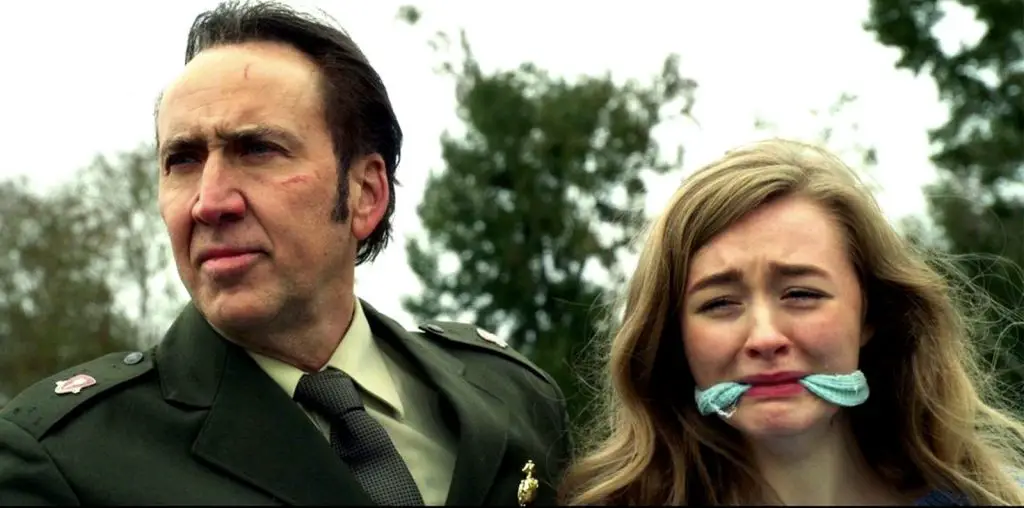
BOOTLEG FILES 476: “The Adding Machine” (1969 film starring Milo O’Shea and Phyllis Diller).
LAST SEEN: We cannot confirm the last public screening of this film.
AMERICAN HOME VIDEO: None.
REASON FOR BOOTLEG STATUS: It is unclear why this film remains out of circulation.
CHANCES OF SEEING A COMMERCIAL DVD RELEASE: It is possible.
The great Irish character actor Milo O’Shea recently passed away, and the obituaries honoring his life cited his many fine achievements, including his memorable supporting performances as the goodly Friar Laurence in the Zeffirelli version of “Romeo and Juliet” and the treacherous Dr. Durand Durand in “Barbarella” (both from 1968).
O’Shea was rarely entrusted with a leading film role. His most prominent starring part was as Leopold Bloom in the 1967 film version of James Joyce’s “Ulysses.” But his strangest starring role came in the subject of this week’s column: Jerome Epstein’s 1969 film “The Adding Machine.”
“The Adding Machine” is based on the 1923 play by Elmer Rice. If you never heard of the play or its creator, you’re not alone. Rice was a prolific playwright, though the quantity of his output far outweighed the quality. Outside of “The Adding Machine” and the 1929 Pulitzer Prize-winning “Street Scene,” Rice created a large canon of utterly forgettable plays that have slipped into well-deserved obscurity. (Anyone for “Close Harmony,” “The Gay White Way” and “C**k Robin”?) Indeed, the fact it took 46 years to get “The Adding Machine” on screen says volumes for its appeal.
The core of “The Adding Machine” is a New York department store accountant with the unlikely surname of Zero. (The character is not given a first name). He spends his days in a cramped office with an assistant named Daisy Devore, and they meticulously add up the store’s many receipts. Zero and Daisy are openly antagonistic to each other, yet in theatrical-style inner monologues (performed VERY LOUD) each offers a surprisingly sincere consideration of the other. But Zero is married and divorce is out of the question, so the pair keeps their feelings secret and spends their time bickering over the workload.
Zero’s home life is just as dreary as his working days. The Zero residence is a crummy tenement apartment, where his slovenly wife obsesses over the latest movies while berating Zero for his failings as a provider. Zero mostly ignores her, refusing to engage her in conversation and staring blankly into space while she belittles his character flaws.
There is a brief glimmer of hope in Zero’s life: his 25th anniversary at his job has come around, and he daydreams wildly that his employer will give him a raise and a promotion. And, at first, it appears that reality will overlap with fantasy when Zero’s employer asks for a few minutes of his time. Alas, the conversation is not what Zero intended: the boss informs him that the store has purchased a new adding machine to handle the accounting work that Zero had been doing manually for the past quarter-century. With no further need for his services, Zero is informed that his job is over.
Zero responds to the news by killing his boss. He is arrested and put on trial, where he has another theatrical-style inner monologue in which he defends his actions with a weird mix of anger and self-pity. A prison visit by his wife ends terribly (they fight over who should get the scrapbook of news clippings relating to Zero’s crime) and he is executed. Zero awakes to find himself in an amusement park-style afterlife, where he is reunited with Daisy – she killed herself after Zero’s arrest. Sadly, Zero finds little comfort in adjusting to life after death, and eventually he is informed by a quasi-military figure known as Lieutenant Charles that he is to be returned to Earth for another crack at life.
In adapting the Rice play for the screen, writer/director Epstein took some very strange liberties. For starters, he moved the time frame from Rice’s 1923 original setting into the 1930s, a point that is driven home by a title sequence ripe with newsreel footage of Depression-era mayhem and misery. But beyond this opening, there is little to signify a distinctive 1930s setting.
Even worse, Epstein chose to shoot the film in London with a mostly British cast. Incredibly, none of the non-American actors successfully manages to wrap their proper diction around gritty Noo Yawk-style of conversation. O’Shea tries hard, but his voice comes out as monotonous; his Irish lilt accidentally pops out at odd moments during Zero’s occasional rants. And the great British actress Billie Whitelaw, as the doomed Daisy, does a third-rate imitation of Judy Holliday’s “Born Yesterday” performance – her vocal performance is so wrong that she turns Rice’s melodramatic dialogue into low comedy with her inept line readings.
But all of that pales with the arrival of Phyllis Diller as Zero’s nagging wife. Why is Phyllis Diller (buried under utterly atrocious make-up) playing an unsympathetic dramatic role in a British-made version of a long-forgotten 1923 melodrama? That is certainly a mystery for the ages! Lord knows she gives it her best shot, but it is impossible to watch her without expecting a wisecrack about Fang. Epstein gave Diller top billing in the cast, even though her part is relatively small – perhaps he was hoping that unsuspecting Americans would think this was a zany comedy movie.
Also in the cast is Sydney Chaplin as Lieutenant Charles. Epstein had previously directed Sydney Chaplin in the forgettable 1961 British-based feature “Follow That Man” – these were relatively rare film appearances for Chaplin, who was primarily a Broadway actor. Chaplin’s casting in Epstein’s films was due to filmmaker’s long-standing relationship with the actor’s famous father – Epstein was Charlie Chaplin’s assistant on “Limelight,” associate producer on “A King in New York” and producer on “A Countess from Hong Kong.”
Monty Python fans will be interested to know that Carol Cleveland is part of the cast, although she is barely on screen. And “Star Wars” addicts might have some fun seeing their beloved General Maximilian Veers (a.k.a. Julian Glover) as a gentle mass murderer who befriends Zero in prison.
“The Adding Machine” was a major flop when it was released. Although it has turned up occasionally on television, it remains mostly unknown to contemporary audiences. To date, there has never been a commercial U.S. home entertainment release – most likely, there are underlying rights problems with the Rice play that need ironing out – although a decent bootleg copy can easily be found via the iOffer website.
However, the only reason for watching “The Adding Machine” is strictly academic – this production offers a killer lesson in how not to adapt a play into a movie!
IMPORTANT NOTICE: The unauthorized duplication and distribution of copyright-protected material, either for crass commercial purposes or profit-free s***s and giggles, is not something that the entertainment industry appreciates. On occasion, law enforcement personnel boost their arrest quotas by collaring cheery cinephiles engaged in such activities. So if you are going to copy and distribute bootleg material, a word to the wise: don’t get caught. Oddly, the purchase and ownership of bootleg DVDs is perfectly legal. Go figure!

